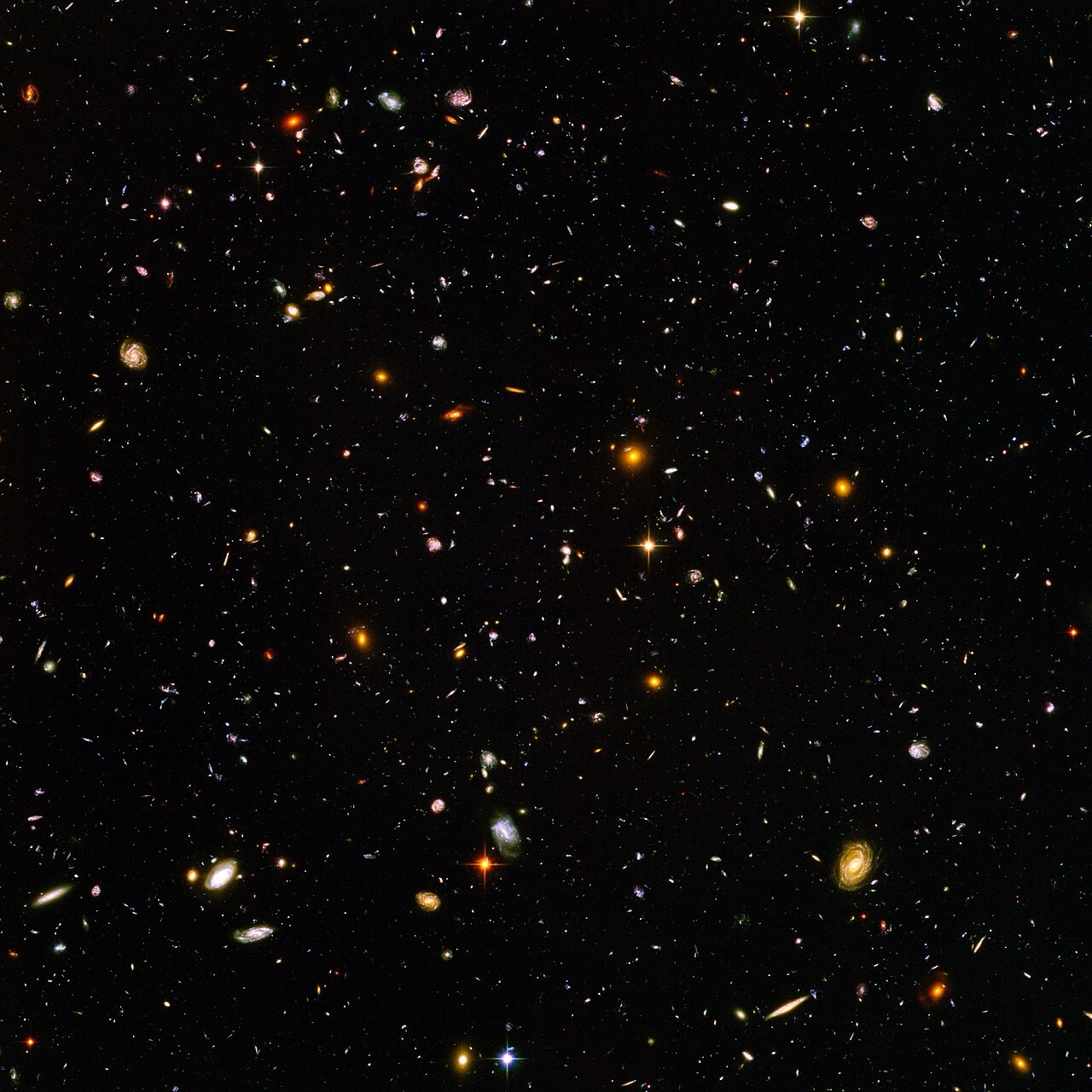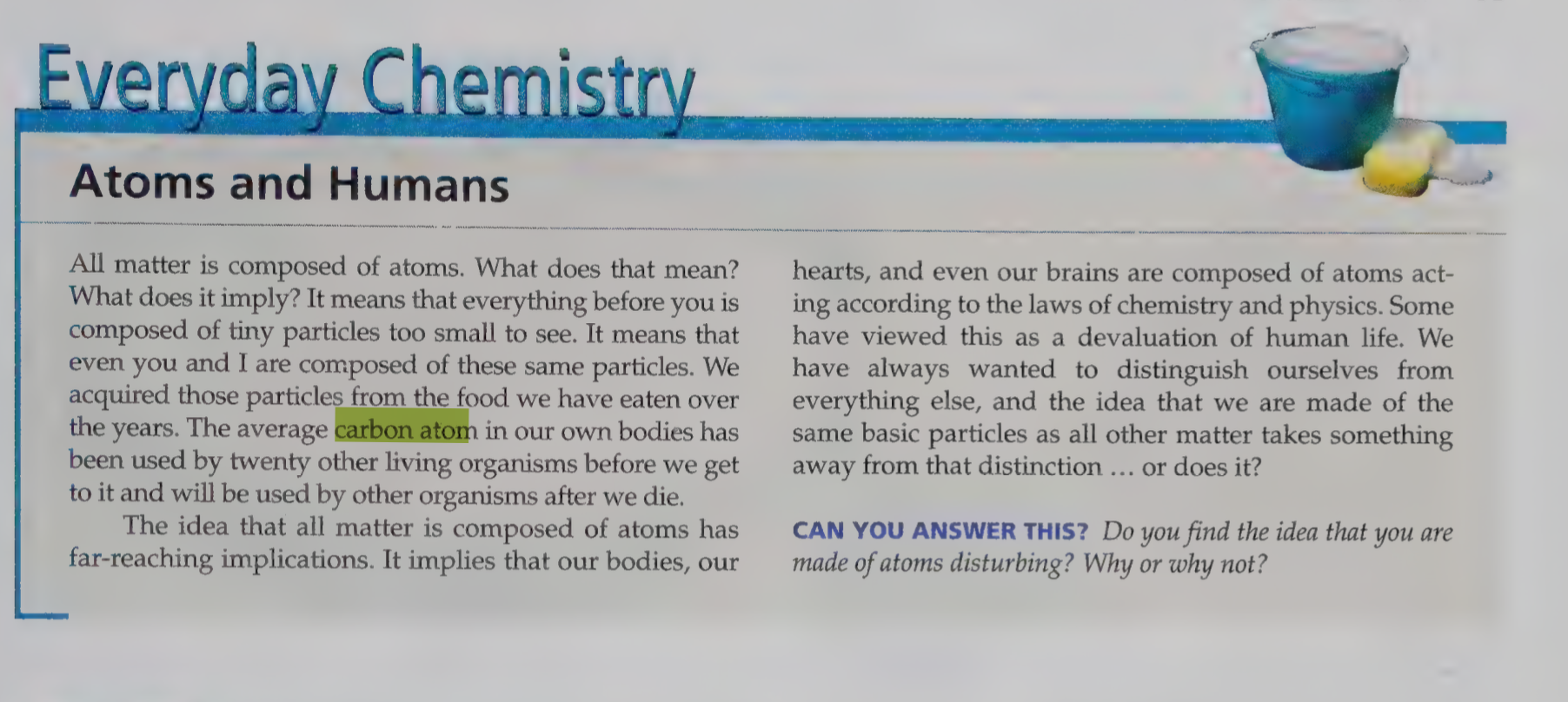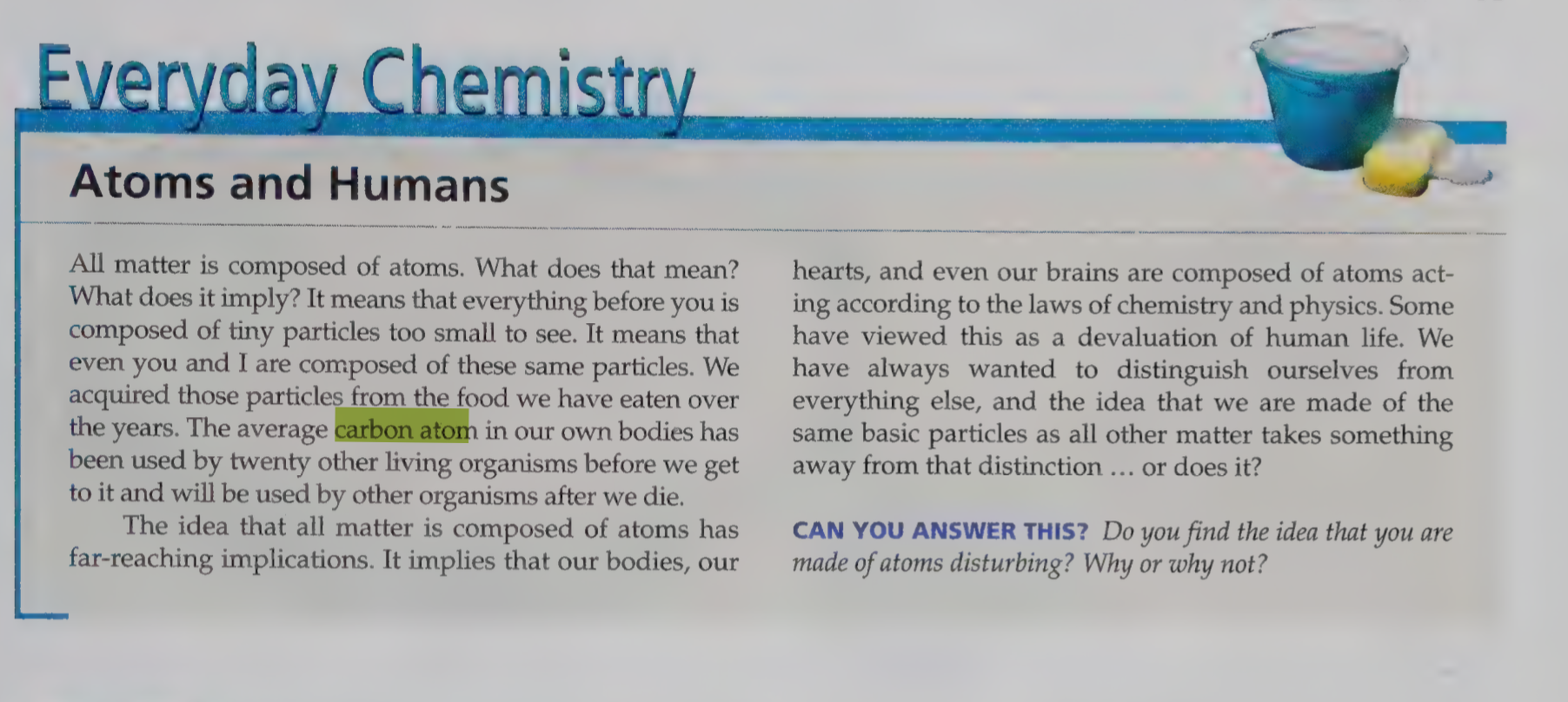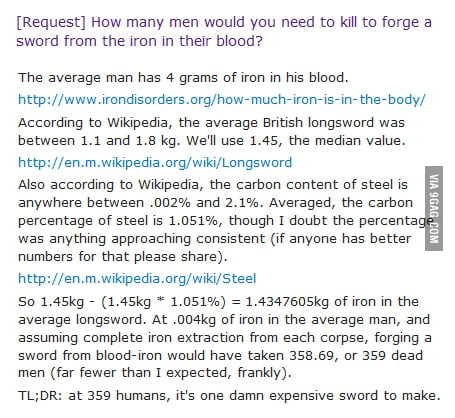The size of the universe and the distance between everything in it. It takes about 8 minutes for light from our own sun to reach us. And the observable universe is about 5,859,000,000,000,000,000 times larger than that! That is quite a trip. I would need about 293,283,000,000,000,000,000,000,000 charging stops with my electric car to get to the end. I think I’ll pass.
(Someone smarter than me will probably find out that my math is wrong)
What I find mind blowing about the scale of the universe, is that on a logarithmic scale from the smallest possible thing to the largest possible thing, humans live at almost the exact centre.
Awesome!
It’s so absurdly big. Our galaxy (the Milky Way) is estimated to have between 100 and 400 billion stars in it. For a long time we thought our galaxy was all there was, it wasn’t until 1925 when Edwin Hubble was able to prove that M31 was not a nebula or cluster of stars in our galaxy, but in fact an entirely different galaxy altogether that we realized there are more galaxies out there.
Look at the Hubble Ultra Deep Field picture

This was a taken by pointing the Hubble Space Telescope at a basically empty bit of space 2.4 by 2.4 arcminutes in size (for comparison, the moon has an apparent size of about 30 arcminutes, or half a degree). So an absolutely tiny part of the sky. It contains about 10.000 galaxies.
The observable universe is estimated to have between 200 billion and 2 trillion galaxies in it, with on average about 100 billion stars per galaxy. It’s absolutely mind blowing.
A Planck length is the smallest length possible, a smaller length simply can’t exist.
At least that’s what scientists believed until they studied OPs penis, then they found out something smaller does in fact exist.
Dude! I told you in confidence not to share that info.
I guess I have no choice but to share that @[email protected] has the world’s biggest human anus. It’s been a scientific mystery about how it got to be so big.
I said out loud at a Warhammer convention that space marines are just dolls for grown men.
I mean… You’re not exactly wrong.

There are more stars in the visible universe than there are grains of sand on all the beaches in the world.
95% of our DNA is basically useless gibberish. Since the evolutionary incentive to shorten it is so small in our case, all sorts of processes “hijack” it to propagate themselves without giving anything back.
Just like my codebase.
Biological evolution
For the sake of discussion, let’s say on the one hand a magic man intelligently designed life and all that. And on the other hand we have it arise and evolve over the course of billions of years of random atomic interactions and genetic mutations. I honestly find the second one far more amazing, wondrous, amazing, and mind blowing.
If math is actually uncovering fundamental laws of the universe, rather than just describing it at various scales, then there’s a chance we can rewrite reality with our own set of rules that would render the current ones incompatible (by Gödel’s-IT).
https://en.wikipedia.org/wiki/Mathematical_universe_hypothesis
Tegmark’s MUH is the hypothesis that our external physical reality is a mathematical structure.[3] That is, the physical universe is not merely described by mathematics, but is mathematics — specifically, a mathematical structure.
Look, I only heard about this concept, so maybe there’s more to it, but branches of mathematics are just a set of rules that we create.
Sometimes these rules can be applied to real systems, in our reality, and that helps to describe and understand the universe.
But it’s totally possible to come up with infinite nonsensical, useless mathematical systems that have nothing to do with the universe. The existence of these doesn’t mean that we have or could rewrite reality.
If our universe is bound by the laws of mathematics (big IF), then any theorem discovered within it has to be consistent or incomplete w.r.t it.
If a theorem is discovered that upends math as we know it, then the repercussions could be cosmic.Again, big if about the universe being bound by the laws of maths
Discovery a truth of the universe is not going to affect the truth of the universe.
You’re appearing to claim something nonsensical. The sort of wow-bang nonsense one reads about in pop-science magazines.
(I’m going to abrasively emphasize the conjunctions more, because I feel they’re being glossed over)
IF the truths of our universe are completely mathematically and axiomatically bound, THEN any proof derived within it might have a chance of upsetting a given axiom given the either incomplete or inconsistent nature of mathematics as declared by Gödel, the ramifications of which COULD be dire in such a universe.
I’m NOT saying our universe IS mathematically bound. I’m also NOT saying that a newly discovered universal axiom WILL change the structure of such a universe.
I actually believe that maths merely describes our reality at varying scales.
I am presenting an interesting idea that for some reason is being taken quite literally, and now am having to get defensive about it as if it’s a deeply-held belief of mine…
The fact that planes are kept in the air by the shape of their wings, which forces air to go over at a pace when it can’t push down on the wing as hard as it can push up from underneath. It’s like discovering an exploitable glitch in a videogame and every time I fly I worry that the universe will get patched while I’m at 10,000 feet.
I remember reading a couple years ago that’s not actually how plane wings work. The actual way is much more complicated and hard to explain and hard to teach, so they just teach it this way because its an intuitive mental model that is “close enough” and “seems right”, and it really doesn’t matter unless you’re a plane wing designer.
The basic way an airplane works actually is simple and intuitive: it meets the air at an angle and deflects it downward. The equal and opposite reaction to accelerating that mass of air is an upward force on the wing.
There is, of course a whole lot of finesse on top of that with differences in wing design having huge impacts on the performance and handling of aircraft due to various aerodynamic phenomena which are anything but simple or intuitive. A thin, flat wing will fly though, and balsa wood toy airplanes usually use exactly that.
https://en.wikipedia.org/wiki/Lift_(force)#Simplified_physical_explanations_of_lift_on_an_airfoil
“With a big enough engine you can make a barn door fly.”
Tbf, you can make anything fly if you give it enough thrust. Wings just make it easier.
In a sense, everything can fly. Just sometimes not for very long.
Except bees. Engineers reckon they shouldn’t be able to fly, but bees told them to get fucked and do it anyway
BEHOLD THE CUBE PLANE
the implication of einsteins mass-energy equivalence formula is mind-blowing to me. one gram of mass, if perfectly converted to energy, makes 25 GWh. that means half the powerplants in my country could be replaced with this theoretical “mass converter” going through a gram of fuel an hour. that’s under 10 kilograms of fuel a year.
a coal plant goes through tons of fuel a day.
energy researchers, get on it
What do you think fusion research is?
15 years away from a useful result
Existing nuclear energy, too.
a fun fact: for the most efficient mass energy conversion, you need a huge spin black hole (preferably naked). Then you can get about 42% conversion. (there was a minute physics video about it i think)
Just a fancier way to spin turbines with steam
Fancier or more efficient?
No where near perfect mass conversion…
Max theoretical mass-energy conversion efficiency is under 1%
that’s still waaayyyy more efficient than coal
That is a different level entirely.
The mass-energy conversion from chemical processes is extremely small compared to nuclear processes, you can’t really compare the in any meaningful way
yes you can. coal costs ~32 cent per kWh, and uranium ~$0.0015 per kWh
If mass can convert into energy that easily then we’re all in a lot of trouble…
That time passes differently in galaxies with different gravities. One of these galaxies is Mormon heaven.
Wait what
Gravitational time dilation is an effect of Einstein’s General Theory of Relativity. Places with stronger gravity would then have time pass more slowly compared to earth. The opposite is also true.
I think it’s the Mormon bit that’s being questioned.
Kolob is a planet or star where God resides. Time moves very slowly there. Hence the high gravitational field. Probably because God is massive. I don’t know. I’m not a Christian scientist.
There are more hydrogen atoms in a molecule of water than there are stars in the solar system
Every 60 seconds in Africa, a minute passes
Something should be done about this
Stop fucking clapping then
Correspondence of lovers: He: darling, without you 60 minutes seem like one hour to me! She: I love you so much, wow he is such a romantic!
Not just that, it’s twice the amount!
🤣 in Solar system only one star… the Sun! Go to school!!!
so it’s right
it was a stupid and meaningless statement… 🤣
🤔 2 hydrogen atoms in one molecule, 1 sun in our solar system 🤔
You can observe the chirality of some molecules from the crystals they form, sometimes they twist clockwise, other times they twist counter clockwise. Which way they twist is dependent on their molecular structure.
The label ‘homo sapiens’ for our species.
In chemistry I was taught one carbon atom can exist in at least 12 separate living bodies before it’s no longer stable.
Hon I think you maybe misunderstood your chem class.
Carbon is carbon is carbon and doesn’t know or care if it’s in a living body.
Carbon-14 has a half life of 5700 years. This means that through random decay, the approximate rate of decay is one half of a given amount every 5700 years, this of course breaks down when you reach the single-digit quantities of atoms.
Now, this has nothing to do with the stability of an atom of regular-ass carbon-12, your common garden variety carbon, which is extremely stable and would require outside influence to decay into another isotope.
Ahhh I misremembered. It was this “The average carbon atom in our bodies has been used by twenty other organisms before we get to it and will be used by other organisms after we die.”

It’s been six years since that class.
ah, yeah. that makes more sense
What does that mean?
After you die, the carbon atoms that made you might go on to make another living thing.
that doesn’t make any sense. Carbon doesn’t get less stable by being used in bodies.
Carbon 14 exists, but that decays regardless if it’s in a body or not. At has quite a long half life
At least is a heavy lifting qualifier in this case.
Yea, I misremembered it. It was in my book from a while back. Here we go:

As you established that is not true, however you can add some of that carbon from some body and add it to the iron from the blood of 400 other human bodies so you can forge one nice sword.

Unrelated: Anyone want to hang out? I’m planning a party. Should be enough space for about 400 people.
Holy shit lol. This is amazing!!!
The fact that there is no discernable difference between an alive body or a dead body when it comes to chemical makeup.
All the pieces are there. All the atoms and molecules are still in the same places. Yet despite this the body is still dead.
When you say “All the atoms and molecules are still in the same places”, I can’t say I agree. It is the change of chemical composition that renders our body dead. Or should I say, death is defined to be such a chemical composition.
yes, the same atoms are still there, but all the chemical processes in our body have stopped.
To be fair, a perfectly fine but dead body is impossible to observe since the process of dying is usually the result or accumulation of injuries or disfunctions. For this experiment you either have to kill somebody without altering their body in the slightest or instantly conjure a perfectly intact body without any life in it.
I dunno whether it counts: but that science has effectively cured AIDS.
In 2004, 2.1m people died from it. Twenty years later that figure was a little over a quarter at 630k. The goal for 2025 is 250k. I think that’s absolutely remarkable.
As a child in the 80s I was terrified of AIDS. It made me low-key scared of gay men because the news made it sound like I could I could get it from any one of them. And here we now are, able to provide a medication that can almost completely ensure that you will never be infected by HIV.
Astonishing, really.















